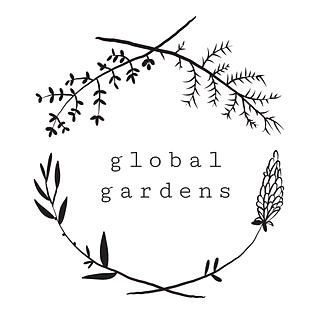SALADSHARE #8 Chard
- Global Gardens
- Apr 23, 2021
- 3 min read
Updated: Apr 26, 2021

Chard (Beta vulgaris subsp. vulgaris) is a leafy green vegetable grown for its slightly bitter leaves that are similar to spinach in flavour. Chard and beetroot share the same ancestor, sea beet, which can be found growing on the coastline.
Chard, confusingly, is known by lots of different names, such as Swiss chard, silver beet, leaf beet, perpetual spinach, beet spinach. The most recognisable feature of chard is its bright-coloured stalks: Swiss chard has white mid ribs, ruby chard – red mid ribs, and perpetual spinach – green mid ribs, altogether they are known as rainbow chard.
Chard originates from the Mediterranean, where it’s prized more for its fleshy stems that are used in various sauces. Chard’s normal growing season is around July to November, but it will live through the winter and will grow more greens through the hungry gap into May, and then run to seed.
Preparation
For cooking, chard is not as tender as spinach but not as tough as kale. It tastes bitter when raw, but once cooked it is milder and sweeter. It is used as a substitute to spinach, or together with other leafy greens such as kale, collard greens, or mustard greens.
The leaves and stems should be prepared separately because the stems are harder and take longer to cook. To prepare chard, fold the leaf in half lengthways and cut out the stems. You can stack the leaves and roll them tightly, then slice them to create ribbons. Cut the stems into 1-2 inches pieces.
Harder stems can be either discarded or boiled and then tossed with butter or oil. The more tender ones can be sautéed with leaves, olive oil and garlic. Raw chard stems can be used as veggie sticks for dips or pickled.
The leaves cut into ribbons can be used raw and mixed in salads. They can also be braised in stews, or sautéed.
Unlike other veg, older and bigger chard leaves won’t get tougher or more bitter than the smaller ones, and are just as good for eating.
Nutrition
Like a lot of leafy greens, chard has an impressive nutritional profile. It is a rich source of vitamins C, E, K, beta-carotene, as well as minerals manganese and zinc. Just like beetroot it contains a phytonutrient called betalain, which contains nitrogen, and appears as pigments of red and yellow hues. Betalain helps chard to survive by protecting it from UV rays and also attracts pollinators as well as provide antioxidant and anti-inflammatory support to our bodies.
Maria’s chard recipe
Serves 4
1 kg chard
4 potatoes
4-5 garlic cloves
1 medium onion
1 spoon paprika
Steam the potatoes in a bit of water, after 5 min add the chunks of chard stalks. After 5 minutes add the rest of the sliced leaves of chard.
Pour some olive oil in a frying pan and when hot add chopped onions, garlic, then paprika.
When potatoes are ready al dente (still firm, but a fork can go through). Put then into garlic/onion/paprika mix and sauté.
To taste one of the options:
a) lift chard from the bit of water and add to the pan and mix/sauté.
b) Drain chard completely and serve on plates, top with the sauté mix.
c) Mix all keeping the bit of water (most evaporated by now) and have a warm veg stew.
My mum does b, I prefer a. Nutritious, simple and delicious.












Comments